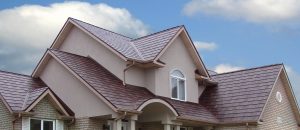Reducing heating bills is a concern for many homeowners, especially as colder months approach. Simple changes in habits and home maintenance can lead to significant savings on energy costs. By implementing practical energy efficiency measures, individuals can create a warmer environment without overextending their budgets. Speaking with heating and cooling minnesota professionals for example, can help those who want to know how to handle their systems so they can manage them throughout the year.
Adjusting the thermostat is one of the most effective methods to cut heating expenses. Setting it just a few degrees lower can lead to noticeable reductions in monthly bills. Additionally, investing in insulation and sealing leaks can help retain heat, making it easier to maintain comfortable temperatures year-round.
Exploring energy-efficient appliances and technologies offers another avenue for savings. Utilizing programmable thermostats and energy-efficient heating systems can enhance overall efficiency. These steps not only lessen financial burdens but also contribute to a more sustainable living environment.
Understanding Heating Costs
Heating costs vary significantly based on the type of system used and the factors influencing efficiency. Knowing these details can help individuals make informed decisions to lower their heating bills.
Types of Heating Systems
There are several common types of heating systems, each with its own operational costs.
- Furnaces:
- Gas Furnaces: Known for their efficiency, they convert gas into heat, often featuring high-efficiency ratings.
- Electric Furnaces: Generally lower in initial cost, but higher energy costs can result in larger bills.
- Heat Pumps:
- Air-source: These systems transfer heat from the air outside. They are more efficient in moderate climates.
- Ground-source (Geothermal): Although costly to install, they provide significant savings over time due to their energy efficiency.
- Boilers:
- Operate by heating water to produce steam or hot water, suitable for radiators or underfloor heating.
Understanding the operational costs and efficiency ratings of each system can provide clarity in selecting the most cost-effective option.
Factors Affecting Heating Efficiency
Several key factors determine how effectively a heating system operates, impacting overall costs.
- Insulation: Proper insulation helps retain heat, reducing the workload on the heating system. Homes with inadequate insulation often see inflated bills.
- Thermostat Settings: Setting thermostats to lower temperatures during unoccupied hours can lead to significant savings. Programmable thermostats enhance this by automatically adjusting settings.
- System Maintenance: Regular maintenance, such as cleaning filters and checking ductwork, improves efficiency. Neglect can result in increased energy consumption.
- Energy Source: The type of energy used influences costs. Gas is often cheaper than electric options, making it crucial to consider fuel choices.
Addressing these factors can lead to enhanced efficiency and reduced heating expenses.
Improving Insulation and Sealing
Proper insulation and sealing are vital for reducing heating costs. They minimize heat loss and enhance energy efficiency in homes. Addressing these areas effectively can lead to significant savings.
Assessing Insulation Levels
Before improving insulation, it is essential to assess the current levels. Homeowners can check areas like attics, crawl spaces, and basements where insulation commonly exists.
- Use a thermal imaging camera or a simple moisture meter to gauge the effectiveness of the insulation.
- R-value measures insulation effectiveness; higher values indicate better performance.
For example, fiberglass insulation typically has an R-value of 2.9 to 4.3 per inch, while spray foam can range from 5.0 to 6.5.
Identifying gaps or insufficient insulation is crucial. Upgrading to meet recommended levels based on local climate can yield long-term benefits.
Sealing Windows and Doors
Drafts from windows and doors contribute significantly to heat loss. Homeowners should inspect these areas for gaps or cracks.
- Weatherstripping is an effective solution. It can be applied using self-adhesive foam tape or a V-strip to create a tighter seal.
- Caulking is another important method, especially for stationary windows and gaps.
Common materials include silicone or acrylic latex. Proper application involves cleaning the area and ensuring that the caulk is evenly distributed.
Sealing these openings can lead to noticeable changes in heating efficiency. Regular maintenance should be part of a homeowner’s routine to retain effectiveness.
Insulating Attics and Walls
Attics are prime areas for insulation upgrades due to heat rising. Homeowners should start by checking existing insulation levels here.
- Adding insulation can significantly reduce heat loss.
Batt insulation made from fiberglass or mineral wool is popular and can be installed between ceiling rafters.
In walls, cellulose or foam insulation can be injected into cavities for better thermal performance.
Identifying air leaks around electrical outlets and fixtures is also important. Foam sealant can address these leaks.
Regular inspection and improvement of attic and wall insulation can contribute to a warmer home and lower energy bills.
Heating System Maintenance
Proper maintenance of heating systems is essential for efficiency and cost savings. Regular servicing, filter replacements, and bleeding radiators contribute significantly to reducing heating bills. For homeowners using propane heating, ensuring a steady and reliable fuel supply is just as important. Working with a trusted provider like Sea Breeze LP can help keep your system running smoothly and prevent unexpected disruptions during colder months.
Regular HVAC Servicing
Regular HVAC servicing ensures that heating systems operate efficiently. Scheduling professional maintenance at least once a year can prevent minor issues from escalating into costly repairs.
Technicians check critical components such as:
- Thermostat calibration.
- Ductwork integrity.
- System pressures and airflow.
During a service visit, they clean internal parts and inspect for wear. This proactive approach helps maintain optimal performance, ensuring that the system heats the home effectively without unnecessary energy consumption.
Replacing Filters
Replacing HVAC filters is crucial for efficient heating. Clogged filters restrict airflow, forcing the system to work harder, which can increase energy bills.
It is advisable to check filters monthly and replace them every 1-3 months, depending on usage and type.
Different types of filters include:
- Fiberglass filters: Inexpensive, and need frequent replacement.
- Pleated filters: Better filtration, lasts longer.
- HEPA filters: Highest efficiency, ideal for allergy sufferers.
A clean filter improves indoor air quality and system efficiency, ultimately lowering heating costs.
Bleeding Radiators
Bleeding radiators remove trapped air that can hinder effective heating. It is particularly important for hot water or steam radiator systems.
To bleed a radiator, one needs:
- A radiator key or flat screwdriver.
- A cloth or a small bowl for any drips.
Steps to bleed a radiator:
- Turn off the heating system.
- Locate the bleed valve, typically at the top.
- Slowly open the valve until water seeps out, then close it.
This simple task enhances heat distribution, making the system more efficient and reducing energy consumption.
Thermostat Management
Effective thermostat management plays a crucial role in optimizing energy consumption and reducing heating bills. By setting appropriate temperatures and utilizing programmable features, individuals can achieve significant savings.
Setting Optimal Temperatures
To maximize energy efficiency, maintaining optimal indoor temperatures is essential. The U.S. Department of Energy recommends setting thermostats to 68 F during the day and 60 F at night. This approach can lead to considerable savings.
Adjusting temperatures by even a few degrees can have a noticeable impact. For example:
- Lowering the thermostat by 1 F can reduce heating costs by around 3%.
- Using blankets and wearing warmer clothing at home allows for comfortable living at lower temperatures.
Regularly checking the settings can prevent unnecessary heating and contribute to overall efficiency.
Utilizing Programmable Thermostats
Programmable thermostats provide flexibility and automation for heating schedules. Users can set specific times for the thermostat to adjust temperatures based on occupancy patterns. This feature can lead to better energy management.
Key benefits of programmable thermostats include:
- Energy Savings: Automatically lowering temperatures when no one is home reduces costs.
- Customizability: Options for different schedules throughout the week cater to varying needs.
Investing in a programmable model can yield substantial savings in the long run, making it a practical solution for efficient heating management.
Smart Heating Practices
Implementing smart heating practices can significantly lower heating bills. By focusing on zoning, minimizing heat loss, and utilizing natural heat sources, individuals can create a more efficient heating environment.
Utilizing Zoned Heating
Zoned heating involves dividing a home into different areas, each controlled independently. This allows for targeted heating, ensuring that only occupied spaces receive warmth.
Smart thermostats can enhance zoned heating systems. They can be programmed to adjust temperatures based on occupancy patterns. For example, lower the heat in seldom-used rooms or during the day when the house is empty.
The savings from reduced energy consumption can be substantial. Homeowners could see a 10-30% reduction in energy costs by only heating necessary areas.
Reducing Heat Loss
Minimizing heat loss is critical for maintaining a comfortable environment and reducing bills. Start by sealing gaps in windows and doors. Weather stripping and caulking are effective solutions for preventing drafts.
Insulation plays a vital role in retaining heat. Upgrading insulation in attics and walls can lead to significant savings. Homeowners should consider both the type and thickness of insulation according to their climate.
Additionally, addressing gaps in ductwork can improve efficiency. Regular maintenance helps ensure that heated air reaches its intended destination without escaping.
Maximizing Natural Heat
Harnessing natural heat sources can further decrease heating expenses. Keeping curtains open during sunny days can help warm rooms naturally. This simple practice allows sunlight to penetrate and heat living spaces without additional energy use.
Using thermal curtains at night conserves that heat. They create an extra barrier, preventing warmth from escaping during colder evenings.
Another method involves strategically placing mirrors to reflect sunlight into darker areas. This enhances light and warmth without any energy cost. Implementing these strategies can maximize comfort while lowering energy expenses.
Energy-Efficient Heating Solutions
Investing in energy-efficient heating solutions can significantly reduce heating costs. Implementing these strategies not only saves money but also minimizes the environmental impact.
Upgrade to a High-Efficiency System
Upgrading to a high-efficiency heating system is a practical way to lower energy bills. Many modern systems, such as condensing boilers or high-efficiency furnaces, have Annual Fuel Utilization Efficiency (AFUE) ratings above 90%. This means they convert more energy into usable heat.
When selecting a new system, consider the following options:
- Energy Star-rated equipment: These models exceed efficiency standards, reducing consumption.
- Variable speed pumps and fans: These adjust to heating needs, maintaining comfort while using less energy.
- Smart thermostats: Allow for precise control, enabling more efficient heating schedules.
Investing upfront may lower long-term costs.
Exploring Renewable Heating Options
Renewable heating options present sustainable alternatives to traditional systems. They harness energy from natural resources, lessening reliance on fossil fuels.
Consider the following renewable solutions:
- Heat pumps: These devices extract heat from the ground or air, transferring it indoors. They can provide both heating and cooling.
- Solar thermal systems: Use solar panels to heat water, which can be distributed through a home’s heating system.
- Biomass systems: Utilize organic materials, such as wood pellets, to generate heat, often with lower emissions.
Selecting appropriate solutions depends on local resources, climate, and installation costs. You might also consider consulting professionals in your area who specialize in sustainable energy solutions, such as Dutch Oil and Propane, or explore similar services near you for expert guidance.
Financial Assistance and Incentives
Reducing heating bills can be achieved not only through energy efficiency measures but also by utilizing financial assistance options. Various programs are available that can significantly offset costs for homeowners.
Government Grants and Rebates
Many governments offer grants and rebates to promote energy efficiency in homes. These financial incentives can help cover the costs of upgrading heating systems, insulating homes, or installing energy-efficient windows.
Examples of incentives include:
- Federal Grants: Some national programs provide direct financial aid for making energy-efficient upgrades.
- State Rebates: Local governments might offer rebates for specific energy improvements, like heat pumps or energy-efficient boilers.
Homeowners should check with their local energy providers or government websites to discover available options and eligibility requirements.
Energy Audit Programs
Energy audit programs evaluate a home’s energy efficiency and identify possible improvements. These audits are often subsidized or free, as they can lead to significant energy savings.
Key aspects of these programs include:
- Home Assessment: Trained auditors assess insulation, heating systems, and air leaks.
- Recommendations for Upgrades: Homeowners receive detailed reports with suggestions for improvements and potential savings.
Participating in these programs not only pinpoints areas for saving energy but may also qualify homeowners for additional financial incentives based on the recommended upgrades.
Long-Term Strategies for Reducing Heating Bills
Implementing effective long-term strategies can lead to significant savings on heating bills. Two crucial approaches include investing in smart home technology and utilizing landscaping for energy conservation.
Investing in Smart Home Technology
Smart home technology can optimize energy use in heating systems. Devices like smart thermostats allow users to program heating schedules based on their routines. They learn preferences over time and adjust settings automatically, ensuring the system runs efficiently.
Additional smart devices, such as energy monitors, provide real-time feedback on energy consumption. This data helps identify unnecessary usage, enabling owners to make informed decisions.
Using zoned heating systems can also enhance comfort and minimize costs. These systems allow separate control of heating in different areas, catering to individual preferences and reducing energy waste.
Landscaping for Energy Conservation
Strategic landscaping can substantially reduce heating costs. Planting trees and shrubs in appropriate locations can create natural windbreaks, shielding homes from cold winds. This helps maintain higher indoor temperatures.
Deciduous trees planted on the south and southwest sides provide shade in summer while allowing sunlight in during winter. This natural heat control is beneficial for lowering energy consumption.
Additionally, using insulating plants or shrubs near foundations can help to trap heat. Incorporating these elements into landscaping designs offers both aesthetic appeal and practical financial benefits over time.




